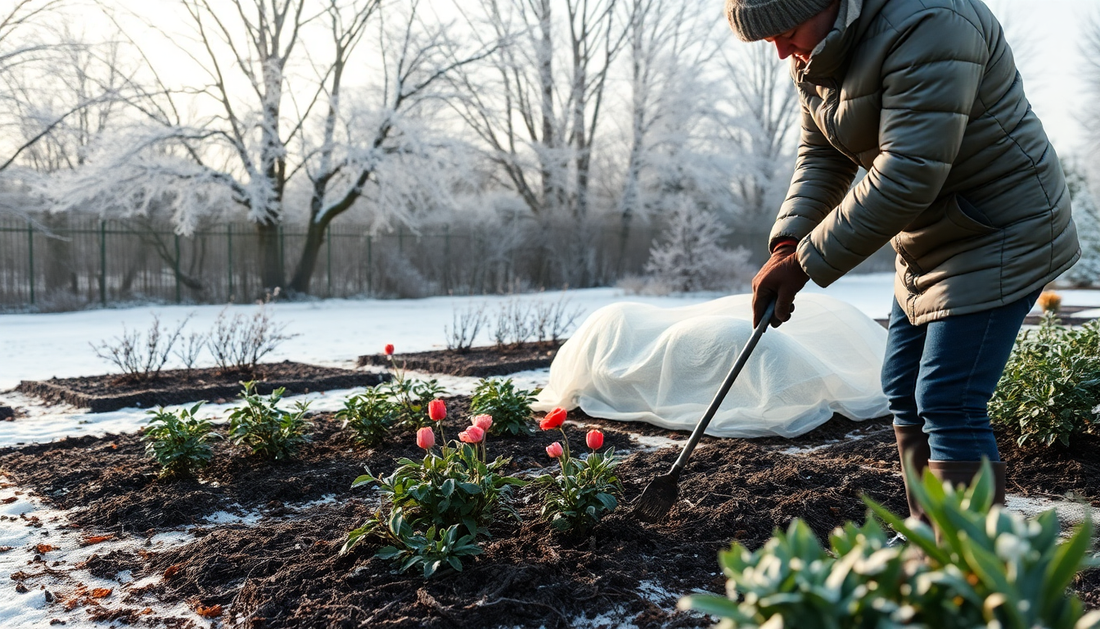
Preparing Your Garden for the Winter Months: A Comprehensive Guide
As the warm summer days fade and the crisp autumn air settles in, it's time to start thinking about preparing your garden for the winter months. While the temptation to let your garden rest may be strong, taking the time to properly prepare it can ensure a healthy and vibrant landscape come spring. In this comprehensive guide, we'll explore the essential steps to get your garden ready for the winter season.
Cleaning and Clearing
The first step in preparing your garden for winter is to clean and clear the area. Begin by removing any dead or dying plants, leaves, and debris from the garden beds. This not only keeps your garden looking tidy but also helps to prevent the spread of disease and pests. Be sure to dispose of any diseased or infested plant material properly, as this can help to prevent the problem from recurring in the following season.
Next, take the time to prune any perennials or shrubs that need it. This helps to encourage healthy growth and can prevent damage from heavy snowfall or strong winds. When pruning, be sure to use clean, sharp tools and make clean cuts to minimize the risk of disease.
Soil Preparation
Healthy soil is the foundation of a thriving garden, and preparing your soil for the winter is crucial. Start by testing your soil's pH levels and making any necessary adjustments. The ideal pH range for most plants is between 6.0 and 7.0, and you can use lime or sulfur to adjust the pH as needed.
Once you've tested and adjusted the pH, it's time to add organic matter to your soil. This can be in the form of compost, well-rotted manure, or a commercial soil amendment. Incorporating organic matter into your soil not only improves its structure and drainage but also provides essential nutrients for your plants.
Mulching
Mulching is an essential step in preparing your garden for winter. Applying a layer of mulch around your plants helps to insulate the soil, retain moisture, and suppress weeds. The ideal depth for mulch is 2-4 inches, and you can use a variety of materials, such as wood chips, shredded bark, or leaves.
When applying mulch, be sure to keep it a few inches away from the stems of your plants to prevent rot or disease. Additionally, avoid using mulch that is too dense or compacted, as this can prevent water and air from reaching the soil.
Protecting Tender Plants
Not all plants are equally equipped to withstand the harsh winter conditions. Tender perennials, such as rosemary or lavender, may need extra protection to survive the winter. Consider covering these plants with a layer of mulch or using a cold frame or row cover to provide additional insulation.
For potted plants, it's important to move them to a sheltered location, such as a greenhouse or a protected porch, to prevent them from freezing. If you don't have access to a sheltered area, you can wrap the pots in burlap or insulating material to help protect the roots.
Watering and Fertilizing
Even though your garden may be dormant during the winter, it's still important to provide it with the necessary water and nutrients. Continue to water your plants regularly, especially during dry spells, to prevent the soil from becoming too dry and causing damage to the roots.
Additionally, consider applying a slow-release fertilizer or compost to your garden beds in the fall. This will help to provide your plants with the nutrients they need to thrive in the spring.
Protecting Vulnerable Areas
Certain areas of your garden may be more vulnerable to the harsh winter conditions, such as exposed slopes or areas with poor drainage. To protect these areas, consider adding additional mulch or creating a windbreak using evergreen shrubs or fencing.
You can also use frost-resistant materials, such as burlap or row covers, to protect tender plants from the elements. Be sure to remove these materials in the spring to allow your plants to receive the necessary sunlight and air circulation.
Conclusion
Preparing your garden for the winter months may seem like a daunting task, but it's an essential step in ensuring a healthy and vibrant landscape in the spring. By following the steps outlined in this guide, you can help to protect your plants, improve the health of your soil, and set the stage for a successful growing season ahead.
Remember, every garden is unique, and the specific needs of your plants may vary. Be sure to closely observe your garden and make adjustments as needed to ensure that your plants are well-protected and ready to thrive in the months to come.


